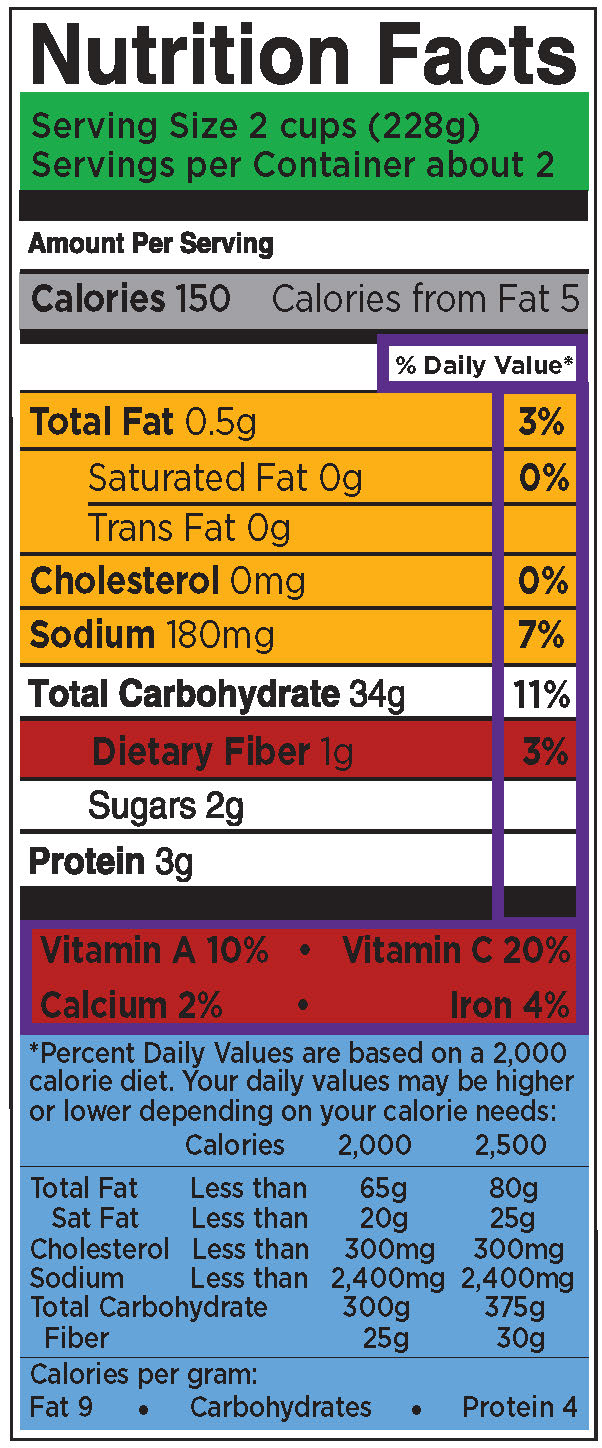An Easy Guide to Understanding Food Labels
Reading food labels is an important habit for a healthier lifestyle. We’ll show you how to quickly find the information you need to make healthy choices.

Reading food labels is an important habit for a healthier lifestyle. All foods are not created equal. Two brands of the same type of food may have two completely different food labels. One may have more calories, fat, or sodium than the other.
The food label tells you the nutritional content of a food to help you make wise choices about what you consume—it’s easy to read and allows you to quickly find information. In addition, standardized serving sizes make product comparison easier.
We’ve color coded a food label to help you understand how to choose healthy foods. Here is what each section means:

Green Section
Serving size and servings per container. The serving size influences all of the nutrients on the label.
Grey Section
Calories per serving and calories from fat. If a 150-calorie food has five calories from fat, divide five by 150 and multiply the answer by 100. The result shows that food gets 3 percent of its calories from fat.
Yellow Section
Fat, cholesterol, and sodium. Limit your daily consumption of these nutrients.
Red Section
Fiber, protein, and vitamin and minerals. Make sure you are getting enough of these nutrients.
Blue Section
Footnotes. It shows the recommended daily amounts of fat, cholesterol, sodium, carbohydrate, and fiber for a 2,000-calorie and 2,500-calorie diet.
Purple Section
Percent daily values. This is the percentage of your daily recommended nutrients that you are getting in one serving of this food. The values are based on a 2,000-calorie diet. If you were only eating 1,500 calories, this would need to be adjusted.
General Guideline – If the food contributes 5 percent or less of the daily value, it is considered low; 20 percent or more is considered high. For example, this food item is low in fat (3%) and low in cholesterol (0%).
If you’re closely watching your diet, you can track your daily amounts of any of these nutrients simply by measuring your serving sizes and using the food’s nutrition label.
Related: Building A Healthy Plate






